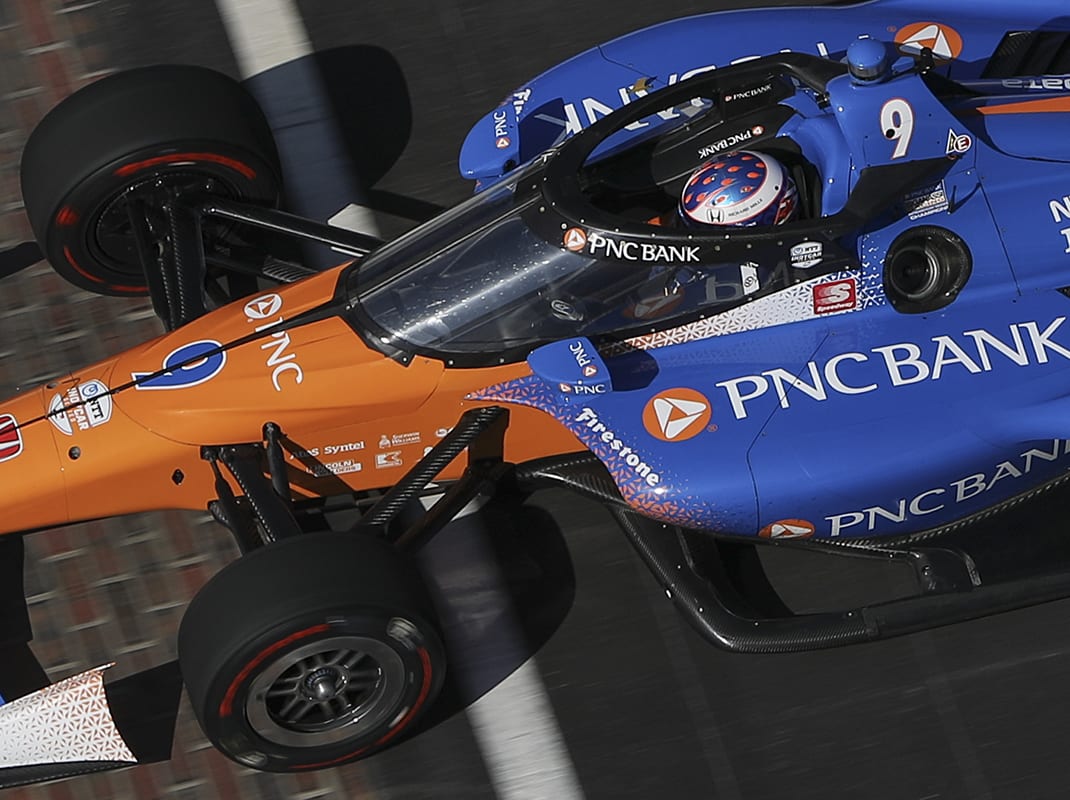“We’ve created a system that protects the driver from a very large range of threats, perhaps more so than any other driver protection system in other series,” said Ed Collings, head of composites and structures for Red Bull Advanced Technologies. “IndyCar is a unique series with limited runoff on the edge of the track and it was important that we could protect the drivers from smaller debris as well as very large items. We have a system with the screen that can protect from smaller debris and then a very strong structure around the top of that screen and with a strut in the center that can deflect a large wheel upright assembly at a very high speed.
“That’s a key attribute of the design, but then we’ve had to manage lots of other things to make sure we don’t introduce other compromises,” Collings added. “We’ve had to design around just the simple things, towing and lifting the vehicles, but also a lot of more scientific work in terms of preventing reflections that could distract the driver. We have to make sure that we don’t have any fogging occurring in any damper, more humid environments, and many other attributes. That’s a small set of examples really of the very detailed study that we’ve undertaken.”
The aeroscreen that will be implemented on the Indy cars is taller than the version that was tested in 2018. It will be a few inches above the driver’s helmet, although the top of the cockpit remains “open” to provide driver extrication after a crash.
“Part of our work has been to study previous crashes in the IndyCar Series and to detect where the helmet position was during those crashes,” Collings said. “One of the important parts of our design is that we don’t put a very rigid structure in a position where the helmet could make contact in a high-G instant. In order to deliver that, we’ve created an exclusion zone where this device, this protection system does not come into that zone so it wouldn’t impede the driver’s head. It’s important that we haven’t introduced any compromises by adding this assembly to the car.
“As a result, that has defined the height of the device,” he continued. “It’s quite similar to the previous windscreen design, but particularly it’s higher at the rear edge in order to protect the driver more comprehensively than the earlier prototype would have done.”

Extensive testing has been conducted at Indianapolis Motor Speedway, Barber Motorsports Park, Richmond (Va.) Raceway and Sebring (Fla.) Int’l Raceway with Scott Dixon, Will Power, Ryan Hunter-Reay, Simon Pagenaud, Josef Newgarden and Sebastien Bourdais among the drivers participating.
“I’m really impressed how quickly it has come together and I can’t thank those guys enough because it is a big change in terms of safety,” said Power, who drives for Team Penske.
Throughout these tests, modifications were made to improve cockpit cooling and tear-offs for the windscreen. The AMR IndyCar Safety Team was also involved, making improvements to the way they can extricate the driver from the top of the aeroscreen.
“Fortunately, Bill Pappas and Jay Frye invited me into those engineering meetings early this spring and told me they wanted safety involved in the engineering process,” said Tim Baughman, IndyCar’s director of track services. “That is the type of thing where the gaps get filled and we don’t get surprised on the race track.
“Dallara has a mockup of an actual car for us with an aeroscreen and it will be our training tub. We will do hundreds and hundreds of drills until our guys are familiar with the extra reach it takes dealing with the aeroscreen.”
According to Frye, all of the boxes have been checked and the aeroscreen is ready for competition.
“We’ve learned something at every test and it’s a matter of checking the boxes,” Frye said. “Over the course of the IMS test and the Barber test, we learned a lot of things cooling-wise that were applied at the Richmond test. Visually, it’s fine. Teams have integrated it more into their livery. The first test, the screen was raw, now teams have worked with it and it looks good.
“All of this adds up into becoming a better show. Right now, all the boxes have been checked.”
That includes the most important box of all — safety.
“To me, this is a total industry-changing driver safety solution,” Frye said. “We couldn’t be prouder of this. This to me is a game changer. This is big.
“The aero kit was obviously very cool,” Frye added. “We got our identity back. We like the way it races, all that type of stuff, less downforce, more horsepower, that’s the direction, that’s all good. But I think this is something that will really change the complexion of the sport for a long time to come, so this is big.”
